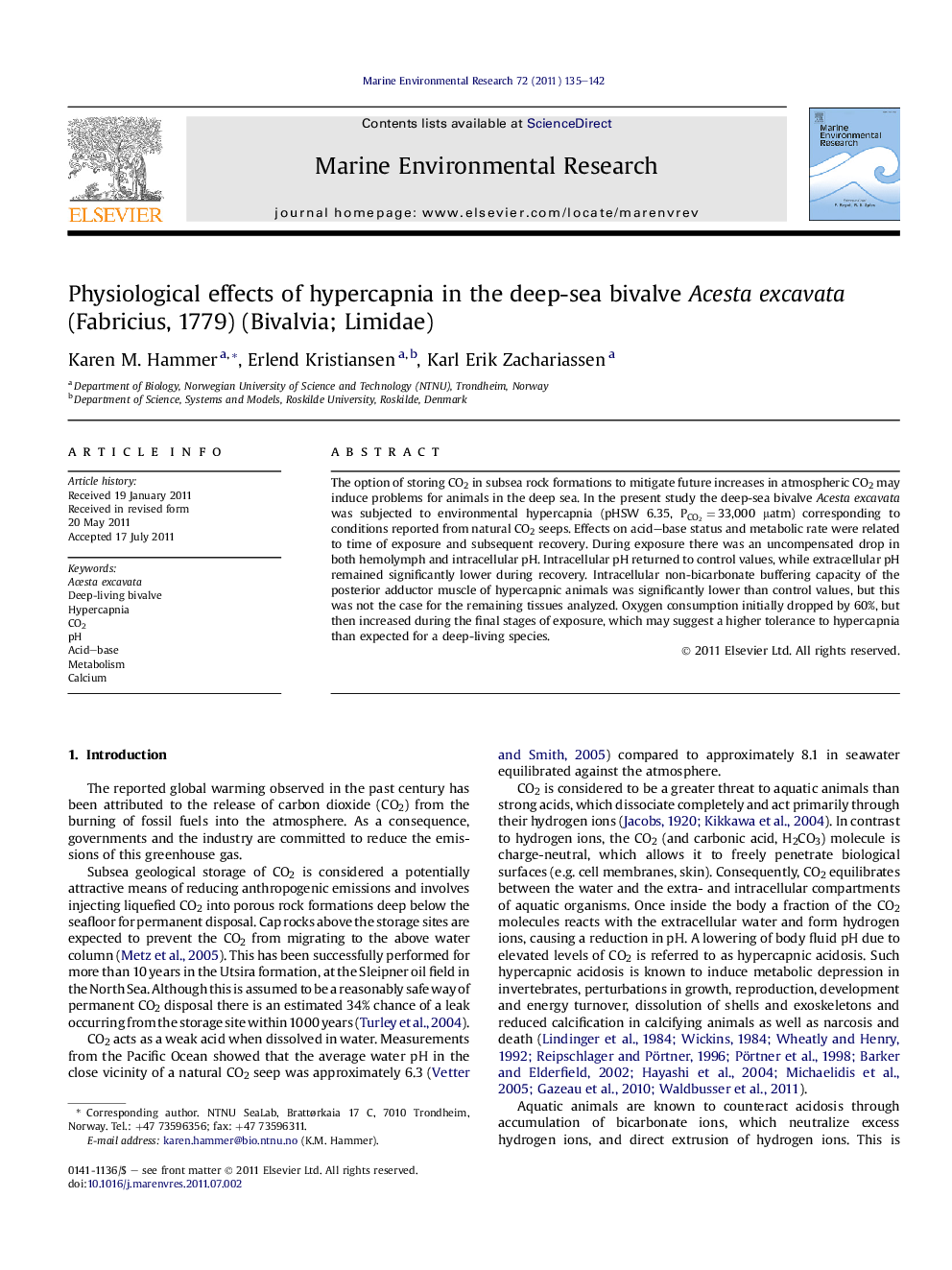| Article ID | Journal | Published Year | Pages | File Type |
|---|---|---|---|---|
| 4551176 | Marine Environmental Research | 2011 | 8 Pages |
The option of storing CO2 in subsea rock formations to mitigate future increases in atmospheric CO2 may induce problems for animals in the deep sea. In the present study the deep-sea bivalve Acesta excavata was subjected to environmental hypercapnia (pHSW 6.35, PCO2PCO2 = 33,000 μatm) corresponding to conditions reported from natural CO2 seeps. Effects on acid–base status and metabolic rate were related to time of exposure and subsequent recovery. During exposure there was an uncompensated drop in both hemolymph and intracellular pH. Intracellular pH returned to control values, while extracellular pH remained significantly lower during recovery. Intracellular non-bicarbonate buffering capacity of the posterior adductor muscle of hypercapnic animals was significantly lower than control values, but this was not the case for the remaining tissues analyzed. Oxygen consumption initially dropped by 60%, but then increased during the final stages of exposure, which may suggest a higher tolerance to hypercapnia than expected for a deep-living species.
► The deep-living bivalve Acesta excavata has a higher than expected tolerance to hypercapnia. ► Tolerance is not based on regulation of body fluid pH but rather to a remarkable capacity to tolerate low pH. ► Intracellular non-bicarbonate buffering capacity was affected in some tissues but not in others. ► Aerobe metabolism was only temporarily affected during exposure.
